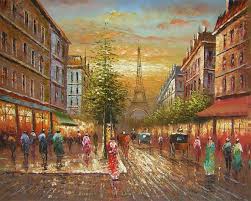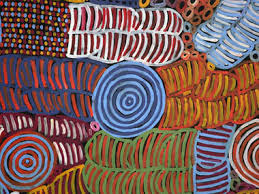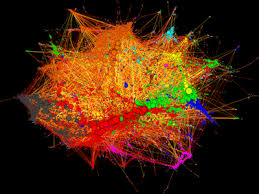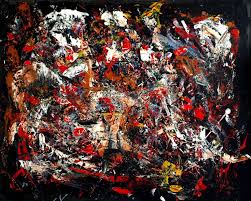Source:- Google.com.pk
Art Painting Biography








Art Painting Biography
BioArt is an art practice where humans work with live tissues, bacteria, living organisms, and life processes. Using scientific processes such as biotechnology (including technologies such as genetic engineering, tissue culture, and cloning) the artworks are produced in laboratories, galleries, or artists' studios. The scope of BioArt is considered by some artists to be strictly limited to “living forms”, while other artists would include art that uses the imagery of contemporary medicine and biological research, or require that it address a controversy or blind spot posed by the very character of the life sciences. [1]
Although BioArtists work with living matter, there is some debate as to the stages at which matter can be considered to be alive or living. Creating living beings and practicing in the life sciences brings about ethical, social, and aesthetic inquiry. The phrase "BioArt" was coined by Eduardo Kac in 1997 in relation to his artwork Time Capsule. Although it originated at the end of the 20th century through the works of pioneers like Joe Davis and artists at SymbioticA, BioArt started to be more widely practiced in the beginning of the 21st century.
Contents [hide]
1 Overview
2 Exposing artists to laboratories
3 Controversy
4 BioArt practitioners
5 See also
6 Bibliography
7 References
[edit]Overview
BioArt is often intended to be shocking or humorous. One survey of the field in Isotope: A Journal of Literary Science and Nature Writing puts it this way: "BioArt is often ludicrous. It can be lumpy, gross, unsanitary, sometimes invisible, and tricky to keep still on the auction block. But at the same time, it does something very traditional that art is supposed to do: draw attention to the beautiful and grotesque details of nature that we might otherwise never see."[2]
While raising questions about the role of science in society, "most of these works tend toward social reflection, conveying political and societal criticism through the combination of artistic and scientific processes."[3]
While most people who practice BioArt are categorized as artists in this new media, they can also be seen as scientists, since the actual medium within a work pertains to molecular structures, and so forth. Because of this dual-acceptance, the Department of Cell Biology at Harvard University invites anyone to submit works based on scientific or artistic value.[4] This can encourage anyone to submit work they strongly respond to.
[edit]Exposing artists to laboratories
Artists visiting laboratories can be a trying experience, since it requires artists to engage an environment that is initially foreign. Eventually, artists use formations pertaining to science, such as working with bacteria or live-tissue.
Much of the art involves tissue-culturing and transgenics, a term for a variety of genetic engineering processes through which genetic material from one organism is altered by the addition of synthesized or transplanted genetic material from another organism.[5]
In 2000, Eduardo Kac commissioned the creation of a transgenic GFP bunny as part of a piece called GFP Bunny. "The PR campaign included a picture of Kac holding a white rabbit and another, iconic image of a rabbit photographically enhanced to appear green."[6]
The Tissue Culture & Art Project in collaboration with Stelarc grew a 1/4 scale replica of an ear using human cells. The project was carried out at SymbioticA: the Art & Science Collaborative Research Laboratory, School of Anatomy and Human Biology, University of Western Australia. [7]
[edit]Controversy
BioArt has been scrutinized for its apparent lack of ethics. USA Today reported that animal rights groups accused Kac and others of using animals unfairly for their own personal gain, and conservative groups question the use of transgenic technologies and tissue-culturing from a moral standpoint.[8]
Alka Chandna, a senior researcher with PETA in Norfolk, Virginia, has stated that using animals for the sake of art is no different from using animal fur for clothing material. "Transgenic manipulation of animals is just a continuum of using animals for human end, regardless of whether it is done to make some sort of sociopolitical critique. The suffering and exacerbation of stress on the animals is very problematic."[9]
However, many BioArt projects deal with the manipulation of cells and not whole organisms, such as Victimless Leather by SymbioticA. "An actualized possibility of wearing ‘leather' without killing an animal is offered as a starting point for cultural discussion. Our intention is not to provide yet another consumer product, but rather to raise questions about our exploitation of other living beings."[10] These projects were developed precisely to highlight and problematise our relationship to non-human animals and the use of animal products in scientific processes.
[edit]BioArt practitioners
Laura Cinti
Hunter Cole
Critical Art Ensemble
Joe Davis
Anna Dumitriu
George Gessert
Rick Gibson
Eduardo Kac
Robert B. Lisek
Francesco Monico
Orlan
Marc Quinn
Stelarc
Symbiotica
[edit]See also
Computer art
Cyberarts
Digital art
Electronic art
Internet art
New Media art
Transhumanist art
Hybrid arts
[edit]Bibliography
Anker, Suzanne, and Dorothy Nelkin. The Molecular Gaze: Art in the Genetic Age. Cold Spring Harbor, N.Y.: Cold Spring Harbor Laboratory Press, 2004.
Da Costa, Beatriz, and Kavita Philip (eds.). Tactical Biopolitics: Art, Activism, and Technoscience. Cambridge: MIT Press, 2008.
Gatti, Gianna Maria. The Technological Herbarium. Edited, translated from the Italian, and with a preface by Alan N. Shapiro. Berlin: Avinus Press, 2010. Online at alan-shapiro.com
Gessert, George. Green Light: Toward an Art of Evolution. Cambridge: MIT Press/Leonardo Books, 2010. ISBN 978-0-262-01414-4.
Hauser, Jens. "Bio Art - Taxonomy of an Etymological Monster." UCLA Art/Sci Center series, 2006. Online at [2]
Hauser, Jens (ed.). sk-interfaces. Exploding borders - creating membranes in art, technology and society. Liverpool: University of Liverpool Press, 2008. ISBN 978-1-84631-149-9.
Kac, Eduardo.Telepresence and Bio Art. Ann Arbor: University of Michigan Press, 2005. ISBN 978-0-472-06810-4.
Kac, Eduardo (ed.). Signs of Life: Bio Art and Beyond. Cambridge: MIT Press/Leonardo Books, 2007. ISBN 0-262-11293-0.
Karafyllis, Nicole C. (ed.). Biofakte - Versuch über den Menschen zwischen Artefakt und Lebewesen. Paderborn: Mentis 2003. In German.
Levy, Steven. "Best of Technology Writing 2007." Ann Arbor: University of Michigan Press, 2007 (in conjunction with DIGITALCULTUREBOOKS) [3]
Miah, Andy. (ed.). Human Futures: Art in an Age of Uncertainty. Liverpool: Liverpool University Press, 2008. ISBN 978-1-84631-181-9.
Mitchell, Rob. Bioart and the Vitality of Media. Seattle: University of Washington Press, 2010. ISBN 978-0-295-99008-8.
Mitchell, Rob, Helen Burgess, and Phillip Thurtle. Biofutures: Owning Body Parts and Information. Pennsylvania: University of Pennsylvania Press, 2008. Interactive DVD.
Reichle, Ingeborg. Kunst aus dem Labor. Springer, 2005. In German.
Thacker, Eugene. "Aesthetic Biology, Biological Art." Contextin' Art (Fall Issue, 2003). Online at [4]
Thacker, Eugene. The Global Genome - Biotechnology, Politics, and Culture (Massachusetts: MIT Press/Leonardo Books, 2006. pp. 305–320. ISBN 978-0-262-70116-7.
Vita-More, Natasha. "Brave BioArt 2: Shedding the Bio, Amassing the Nano, and Cultivating Emortal Life." "Reviewing the Future" Summit, Montreal, Canada, Coeur des Sciences, University of Quebec, 2007. [5]
Zylinska, Johanna. Bioethics in the Age of New Media. Cambridge: MIT Press/Leonardo Books, 2009. ISBN 978-0-262-24056-7.
Although BioArtists work with living matter, there is some debate as to the stages at which matter can be considered to be alive or living. Creating living beings and practicing in the life sciences brings about ethical, social, and aesthetic inquiry. The phrase "BioArt" was coined by Eduardo Kac in 1997 in relation to his artwork Time Capsule. Although it originated at the end of the 20th century through the works of pioneers like Joe Davis and artists at SymbioticA, BioArt started to be more widely practiced in the beginning of the 21st century.
Contents [hide]
1 Overview
2 Exposing artists to laboratories
3 Controversy
4 BioArt practitioners
5 See also
6 Bibliography
7 References
[edit]Overview
BioArt is often intended to be shocking or humorous. One survey of the field in Isotope: A Journal of Literary Science and Nature Writing puts it this way: "BioArt is often ludicrous. It can be lumpy, gross, unsanitary, sometimes invisible, and tricky to keep still on the auction block. But at the same time, it does something very traditional that art is supposed to do: draw attention to the beautiful and grotesque details of nature that we might otherwise never see."[2]
While raising questions about the role of science in society, "most of these works tend toward social reflection, conveying political and societal criticism through the combination of artistic and scientific processes."[3]
While most people who practice BioArt are categorized as artists in this new media, they can also be seen as scientists, since the actual medium within a work pertains to molecular structures, and so forth. Because of this dual-acceptance, the Department of Cell Biology at Harvard University invites anyone to submit works based on scientific or artistic value.[4] This can encourage anyone to submit work they strongly respond to.
[edit]Exposing artists to laboratories
Artists visiting laboratories can be a trying experience, since it requires artists to engage an environment that is initially foreign. Eventually, artists use formations pertaining to science, such as working with bacteria or live-tissue.
Much of the art involves tissue-culturing and transgenics, a term for a variety of genetic engineering processes through which genetic material from one organism is altered by the addition of synthesized or transplanted genetic material from another organism.[5]
In 2000, Eduardo Kac commissioned the creation of a transgenic GFP bunny as part of a piece called GFP Bunny. "The PR campaign included a picture of Kac holding a white rabbit and another, iconic image of a rabbit photographically enhanced to appear green."[6]
The Tissue Culture & Art Project in collaboration with Stelarc grew a 1/4 scale replica of an ear using human cells. The project was carried out at SymbioticA: the Art & Science Collaborative Research Laboratory, School of Anatomy and Human Biology, University of Western Australia. [7]
[edit]Controversy
BioArt has been scrutinized for its apparent lack of ethics. USA Today reported that animal rights groups accused Kac and others of using animals unfairly for their own personal gain, and conservative groups question the use of transgenic technologies and tissue-culturing from a moral standpoint.[8]
Alka Chandna, a senior researcher with PETA in Norfolk, Virginia, has stated that using animals for the sake of art is no different from using animal fur for clothing material. "Transgenic manipulation of animals is just a continuum of using animals for human end, regardless of whether it is done to make some sort of sociopolitical critique. The suffering and exacerbation of stress on the animals is very problematic."[9]
However, many BioArt projects deal with the manipulation of cells and not whole organisms, such as Victimless Leather by SymbioticA. "An actualized possibility of wearing ‘leather' without killing an animal is offered as a starting point for cultural discussion. Our intention is not to provide yet another consumer product, but rather to raise questions about our exploitation of other living beings."[10] These projects were developed precisely to highlight and problematise our relationship to non-human animals and the use of animal products in scientific processes.
[edit]BioArt practitioners
Laura Cinti
Hunter Cole
Critical Art Ensemble
Joe Davis
Anna Dumitriu
George Gessert
Rick Gibson
Eduardo Kac
Robert B. Lisek
Francesco Monico
Orlan
Marc Quinn
Stelarc
Symbiotica
[edit]See also
Computer art
Cyberarts
Digital art
Electronic art
Internet art
New Media art
Transhumanist art
Hybrid arts
[edit]Bibliography
Anker, Suzanne, and Dorothy Nelkin. The Molecular Gaze: Art in the Genetic Age. Cold Spring Harbor, N.Y.: Cold Spring Harbor Laboratory Press, 2004.
Da Costa, Beatriz, and Kavita Philip (eds.). Tactical Biopolitics: Art, Activism, and Technoscience. Cambridge: MIT Press, 2008.
Gatti, Gianna Maria. The Technological Herbarium. Edited, translated from the Italian, and with a preface by Alan N. Shapiro. Berlin: Avinus Press, 2010. Online at alan-shapiro.com
Gessert, George. Green Light: Toward an Art of Evolution. Cambridge: MIT Press/Leonardo Books, 2010. ISBN 978-0-262-01414-4.
Hauser, Jens. "Bio Art - Taxonomy of an Etymological Monster." UCLA Art/Sci Center series, 2006. Online at [2]
Hauser, Jens (ed.). sk-interfaces. Exploding borders - creating membranes in art, technology and society. Liverpool: University of Liverpool Press, 2008. ISBN 978-1-84631-149-9.
Kac, Eduardo.Telepresence and Bio Art. Ann Arbor: University of Michigan Press, 2005. ISBN 978-0-472-06810-4.
Kac, Eduardo (ed.). Signs of Life: Bio Art and Beyond. Cambridge: MIT Press/Leonardo Books, 2007. ISBN 0-262-11293-0.
Karafyllis, Nicole C. (ed.). Biofakte - Versuch über den Menschen zwischen Artefakt und Lebewesen. Paderborn: Mentis 2003. In German.
Levy, Steven. "Best of Technology Writing 2007." Ann Arbor: University of Michigan Press, 2007 (in conjunction with DIGITALCULTUREBOOKS) [3]
Miah, Andy. (ed.). Human Futures: Art in an Age of Uncertainty. Liverpool: Liverpool University Press, 2008. ISBN 978-1-84631-181-9.
Mitchell, Rob. Bioart and the Vitality of Media. Seattle: University of Washington Press, 2010. ISBN 978-0-295-99008-8.
Mitchell, Rob, Helen Burgess, and Phillip Thurtle. Biofutures: Owning Body Parts and Information. Pennsylvania: University of Pennsylvania Press, 2008. Interactive DVD.
Reichle, Ingeborg. Kunst aus dem Labor. Springer, 2005. In German.
Thacker, Eugene. "Aesthetic Biology, Biological Art." Contextin' Art (Fall Issue, 2003). Online at [4]
Thacker, Eugene. The Global Genome - Biotechnology, Politics, and Culture (Massachusetts: MIT Press/Leonardo Books, 2006. pp. 305–320. ISBN 978-0-262-70116-7.
Vita-More, Natasha. "Brave BioArt 2: Shedding the Bio, Amassing the Nano, and Cultivating Emortal Life." "Reviewing the Future" Summit, Montreal, Canada, Coeur des Sciences, University of Quebec, 2007. [5]
Zylinska, Johanna. Bioethics in the Age of New Media. Cambridge: MIT Press/Leonardo Books, 2009. ISBN 978-0-262-24056-7.
Art Painting

Art Painting

Art Painting
Art Painting
Art Painting
Art Painting
Art Painting
Art Painting
Art Painting
Painting Abstract Art
Spray Painting Art